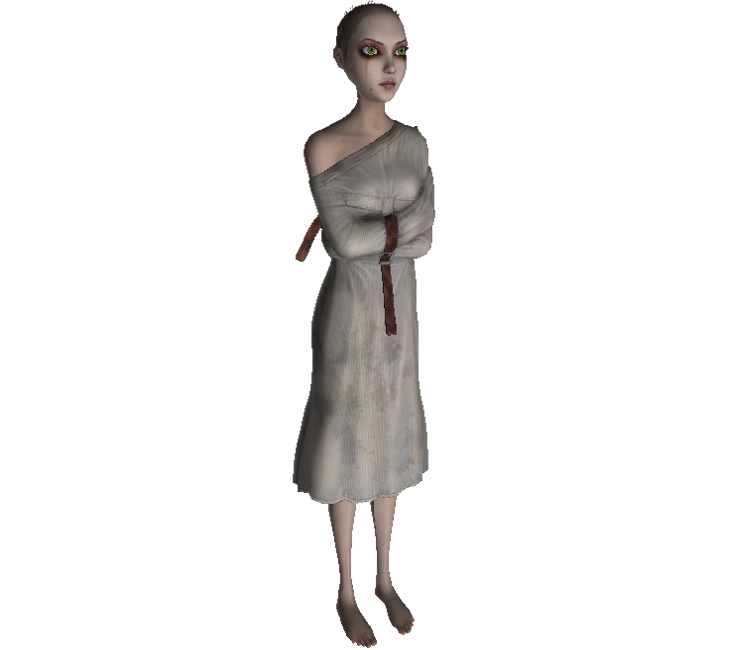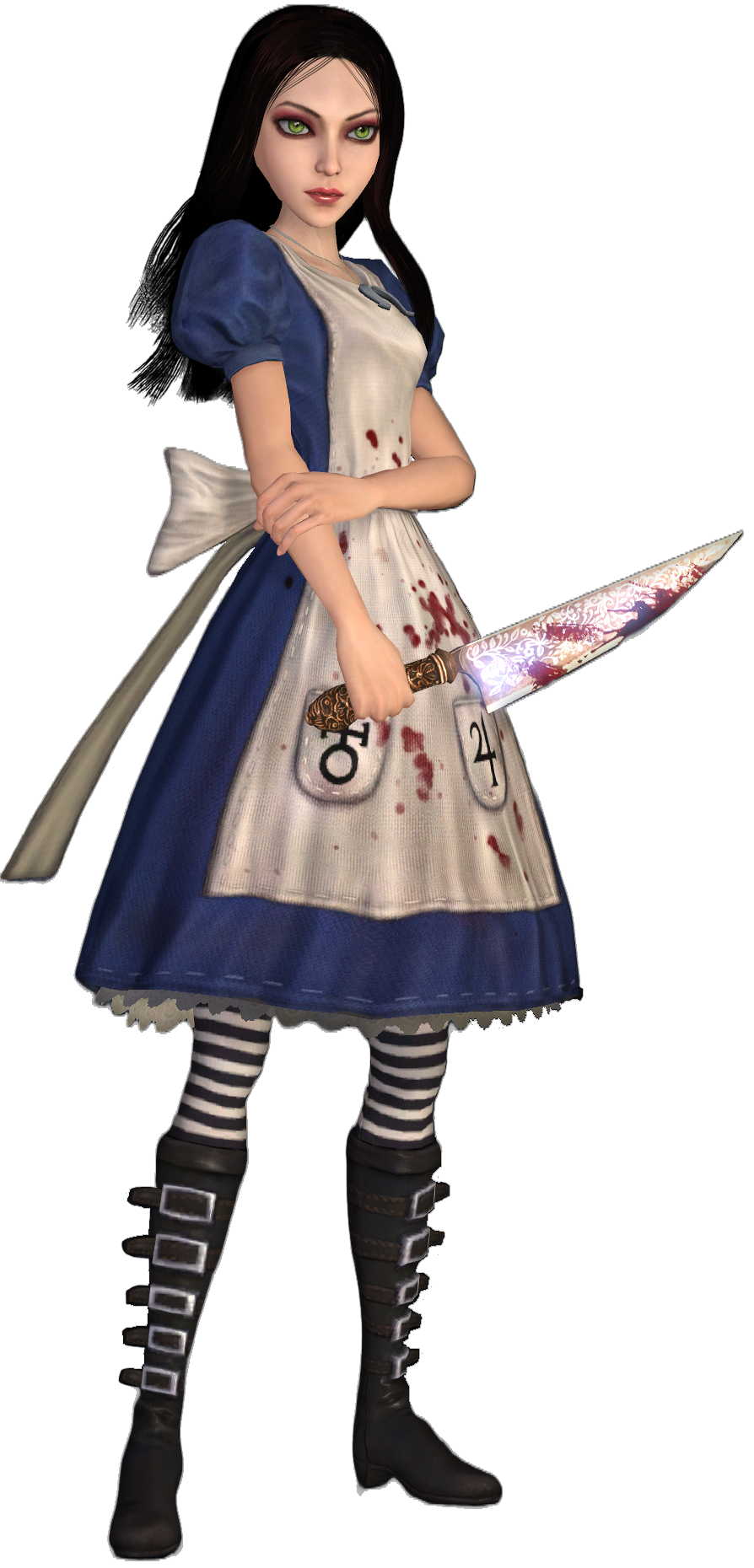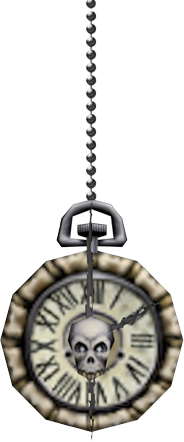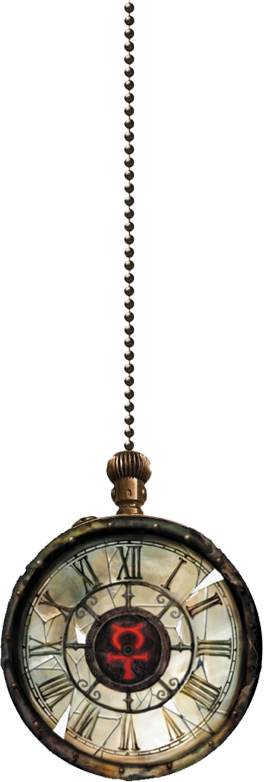Where to play Alice
Alice: Madness Returns is available for purchase on Steam, as well as XBOX, PS3, and EA. It inititally had a preorder bonus of American McGee's Alice, remastered in HD with controller support. However, that hasn't been available since launch and the first game has never been made officially available digitally. This is unfortunate because it is the definitive way to play it, and it was only available for a short time.
Steam Guide: Get the remastered version of American McGee's Alice
You can use this guide to download the first game and configure it to run through Madness Returns. It also includes some additional info about fixing up aspects of both games, as well as unlocking pre-order content.

 Welcome to my shrine for Alice, the video game series created by American McGee. The series began with American McGee's Alice (2000) and continued with Alice: Madness Returns (2011). Both games reimagine Lewis Carroll's Alice in Wonderland as a darker, psychological world shaped by Alice's trauma and recovery after the loss of her family.
Welcome to my shrine for Alice, the video game series created by American McGee. The series began with American McGee's Alice (2000) and continued with Alice: Madness Returns (2011). Both games reimagine Lewis Carroll's Alice in Wonderland as a darker, psychological world shaped by Alice's trauma and recovery after the loss of her family.
This twisted take on Wonderland has surreal world-building and art direction; it is sharp, dreamy, and layered with meaning. Each level feels like a part of Alice's mind, shifting between childhood memories, guilt, and defiance. The visual style, music, and tone all work together to build something uniquely cohesive; the Alice series is gothic, emotional, and surreal. I hope you find something interesting here, whether you're a fan of the game, or if it's your first time coming across Alice, I hope I can persuade you to give it a try!
To navigate the page, simply scroll down, or hover over the jewellery box drawer on the far right of the page to open it.



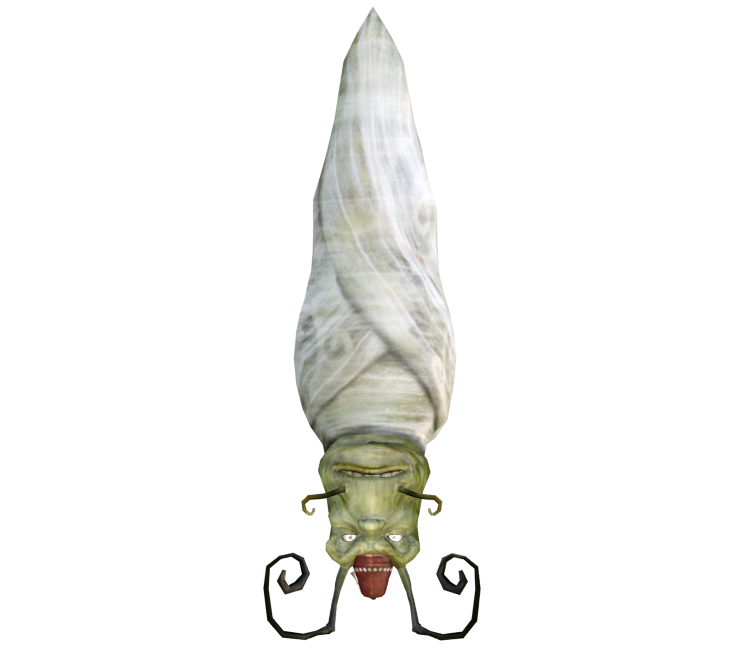
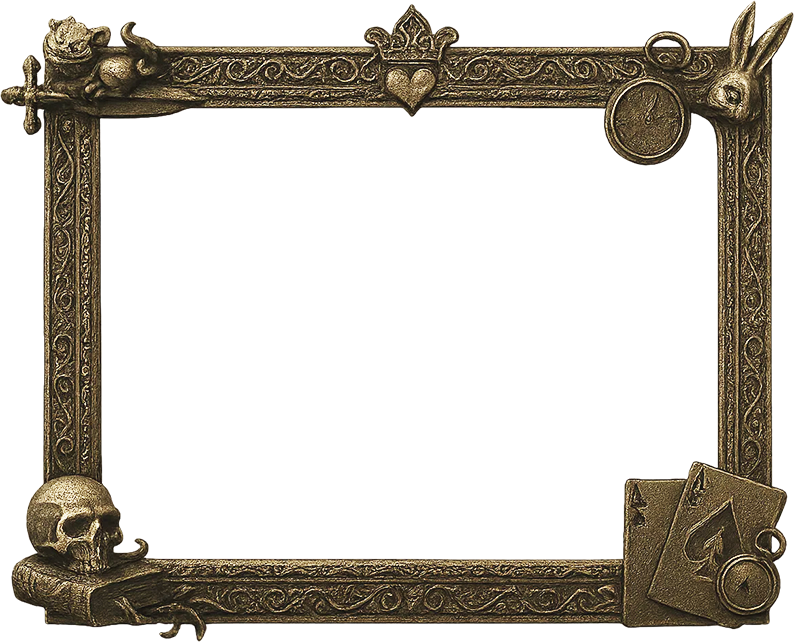
History & Development
Before Alice (1992 - 1997)
The self-titled American McGee's Alice was created by one, as the name suggests, American McGee (yes, that's really his birth name). McGee worked for Id Software in its earliest days, who are known for Wolfenstein (1992), DOOM (1993), and Quake (1996). He did design for all of these games up to Quake II (1997), where he was fired near end of development due to messy internal politics. Left to do contract work for about a year, he then joined EA in 1998 where he was tasked for making a competing first-person shooter game. Due to Id Software's games, as well as Unreal (1998), the genre was exploding in popularity with many developers looking to cash in. Having grown bored of the typical demon-killing/space-marine power fantasies of FPS at the time, McGee wanted to do something truly unique; always having an affinity for Alice in Wonderland, and still conceptualising what he wanted to do for his directoral debut, McGee listened to the song Trip Like I Do by Crystal Method. This would inspire him to create the darker Alice in Wonderland setting for the game.
What actually triggered the thought of Wonderland was a song I was listening to by a group called Crystal Method and there is a voice-over throughout the whole song where this old guy's voice comes on and goes, "In an age of wonder, in a land of magic, this land was once green and good and the crystal cracked." It was a really cool electronic music song. It got me thinking about Wonderland and it was a weird epiphany driving down the freeway and from there it was a matter of trying to figure out how it would work and come up with an idea for the character who you are playing and what you are trying to accomplish.
—American McGee, American McGee Interview (2000)
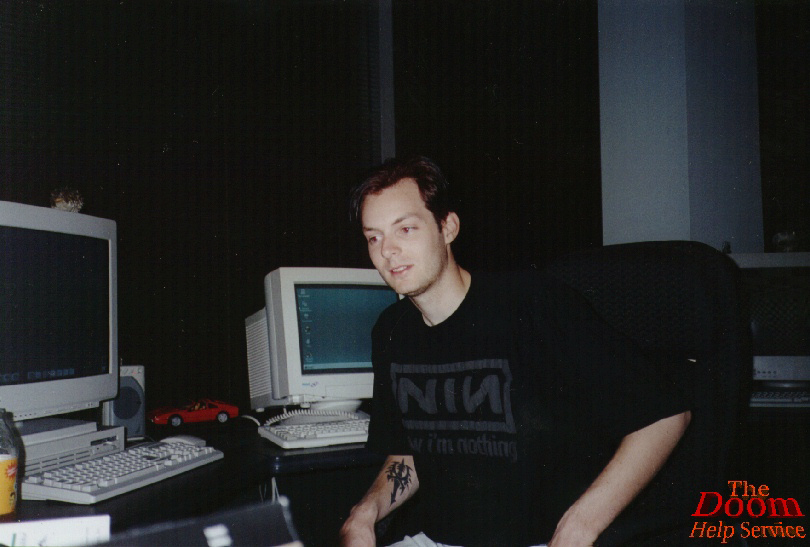
American McGee's Alice (1998 - 2000)
By chance, the team EA would assign to Alice, Rogue Entertainment, had offices right in front of Id Software's office while McGee was still at Id. McGee was already friends with many of the employees who would now be working with him on American McGee's Alice. Inititally, Alice wasn't the easiest idea to sell to EA. They wanted a traditional FPS game that would make lots of money, and McGee was already underway in trying to subvert that. Nonetheless, trusting his experience and creativity, EA would play along and give McGee the opportunity to create the game with a sizeable budget.People wanted us to do a more modern, hip Alice with sunglasses and stuff like that. I said no, we're not gonna do that. I searched around and played with development ideas, with child abuse as the start of it. So that Alice would, for example, come home and get whacked over the head and go into Wonderland, and then actually kill her parents at some point during the course of her journey through Wonderland. Of course, EA didn't want to go for that. There was that, and there were a lot of different ideas, like she was in a dream. Ultimately, we went for the simplest story that told the most.
—American McGee, American Wonderland, the American McGee Interview (2000)
Actually, the original version is fairly dark. It's fairly Victorian and fairly gothic. Even before thinking about Alice in Wonderland, I didn't realize how much it would click with who I am and what I like to do. As I got further and further into it, I realized how simple that transition, that makeover, would be. It really wasn't much of a makeover to be had. It was just a matter of saying, "Here is a different light to put this in and it really isn't that much different than what it already was originally. " You know, Disney had to go quite a stretch to get to the children's version, to the singing. That was a big deal. This was hard but I don't think it was anything like trying to reinvent the characters like they did.
—American McGee, American McGee Interview (2000)
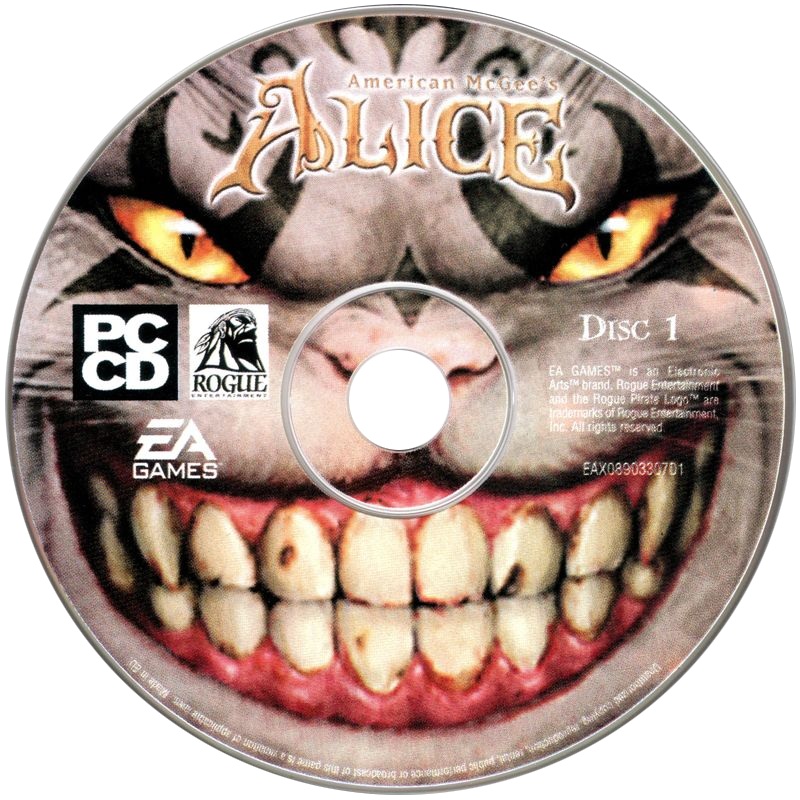
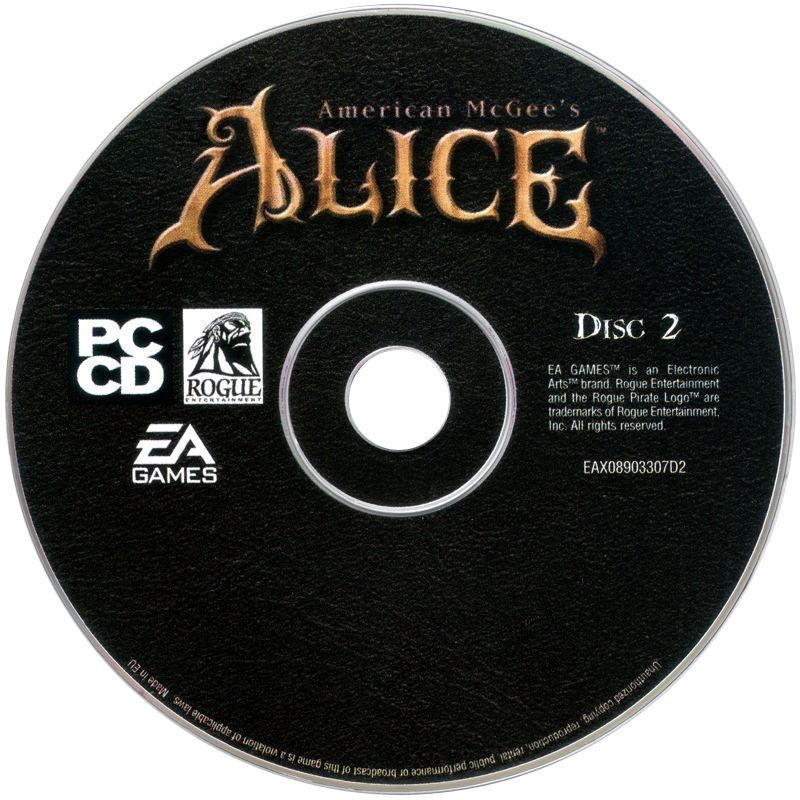
We wanted to create a game that would combine the frantic elements of such legendary games as Doom and Quake with the adventure elements of a Tomb Raider. We were shooting for a game that would seamlessly combine those elements with an intriguing story and use the boundless freedom of Wonderland to create fantastic environments in which to present these features. Another goal was to create a strong female heroine devoid of the usual extremely overexaggerated female assets. Alice was to be a character that would cross the usual gender boundaries in action games and bring female gamers into the fold.
—American McGee, Postmortem: American McGee's Alice (2001)
This expansion and level-detail did not come without problems. Where a level in Quake or Quake II might have taken about a week and a half to make, a single level in Alice would take up to a month or more. This was due to levels being much bigger in size as well as often featuring more verticality than what was typically seen in FPS games at the time. There were other problems concerning the complexity of animating Alice's model and all of the other various characters/enemies. This is because the Quake engine was never really intended to have extensive character expressions or cutscenes; many large levels and various enemy types made the game difficult to develop quickly. From concept to release they had about a year and a half, and experienced many crunch hours in the last 4 months of development. Like most games, this resulted in lots of things being cut for time or simplified. The development of Alice on PC was envisioned to serve as a blueprint for a game that could easily work on consoles as well, and a PS2 port was in active development before being cancelled by EA due to time restraints. Resultingly, EA shut down Rogue Entertainment and laid off all of its developers, leaving McGee angry enough to quit EA immediately after.

In spite of Rogue Entertainment's dissolution and McGee's departure, EA believed the IP had enough staying power to be turned into a film. From 2000 to 2006 there were multiple efforts made to make this a reality, all of which (thankfully) fell apart. They also invested in an toy-line which coincided with the release, while they also sought (and failed) to adapt the game into a comic series.
After the last attempt to make a movie failed in 2006, there was a growing interest in revitalizing the IP. The idea was to remake American McGee's Alice, and this then shifted into making a sequel. By 2008 these talks led to a deal with American McGee and his then-studio, Spicy Horse, and in 2009 the sequel was formally announced to be in the works.
Alice: Madness Returns (2007-2011)
Eleven years passed between both Alice games. During this time, American McGee moved to Shanghai, China. He founded a large indie development studio by the name of Spicy Horse. This studio would go on to be the largest indie developer in China, for a time. Prior to making Madness Returns, they made a few smaller games, one of which was a game called Grimm (2008), an episodic narrative game that covered various fairytales. By some luck, around this same time, EA had a renewed interest in the Alice IP. In 2009, they made contact with American McGee, and formed an agreement wherein Spicy Horse would develop the official Alice sequel. Coincidentally, this same year, a stop-motion Alice fan film was released which takes place 9 months after the end of the first game and sees Alice undergoing therapy after a relapse. Many publications misunderstood this as an official teaser for the game, which gave an unintended but positive influence surrounding the game's reveal.
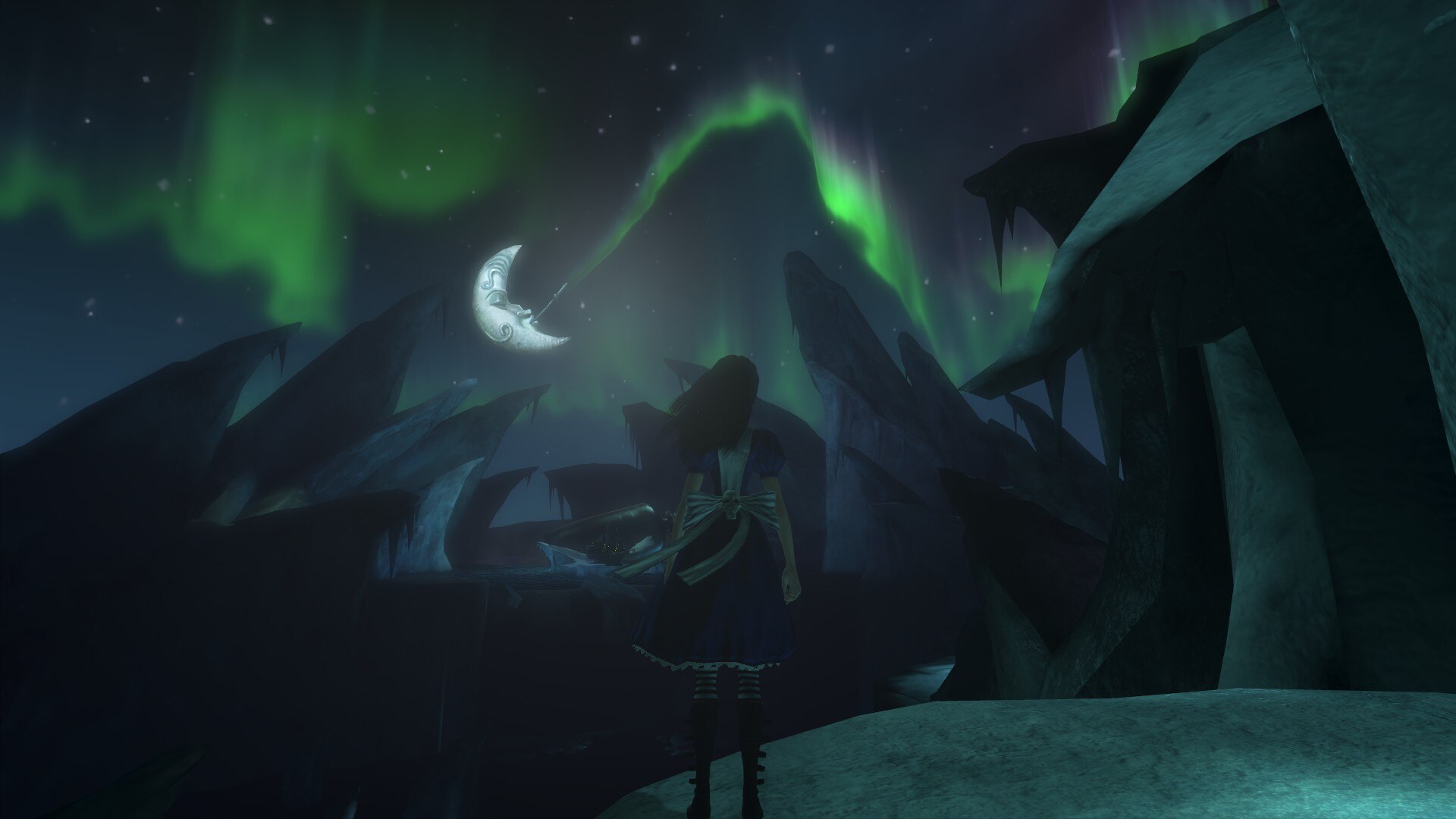
A year later, EA showed the game for the first time while also revealing its' title, Alice: Madness Returns. Before the game was released, Spicy Horse created an iOS free to download interactive storybook app as a form of supplementary material that recaps American McGee's Alice while also providing new context for the upcoming sequel. Madness Returns officially released on June 14th, 2011. Even though the app is long gone and no longer available to download for many years now, I highly suggest watching it on YouTube or right here on this page before you play Madness Returns.
There isn't much info on the development of Madness Returns. Its known that they struggled to include everything they wanted within the time limit given by EA, much like the first game, and subsequently a few bosses were cut from the game. Many employees from Spicy Horse have publically advocated for the great experience they had working for the company and under McGee himself.
Critical Reception
If you care about critics or what they have to say at all, reviews for American McGee's Alice were mostly positive. The visuals, general concept, voice acting and story were met with praise. Where it faced criticism was in its linearity, poor power-up design, and lack of alternate game modes (such as multiplayer and challenge maps).
Alice: Madness Returns also received generally positive reviews, being praised for its imaginative style and visuals, as well as its themes and music. It was critisised for its length (I must laugh) and repetitive gameplay (I must also laugh).


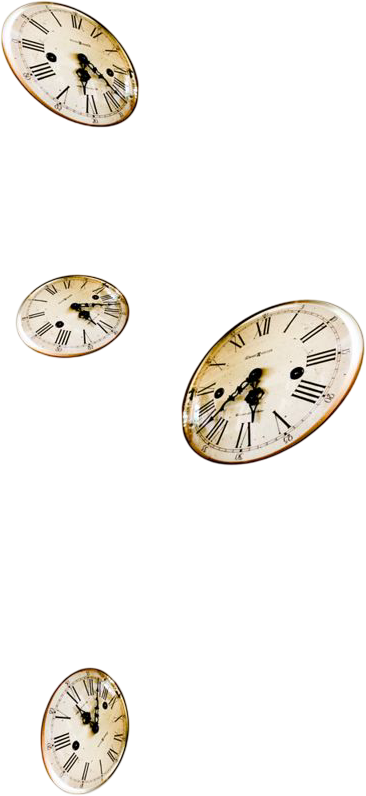
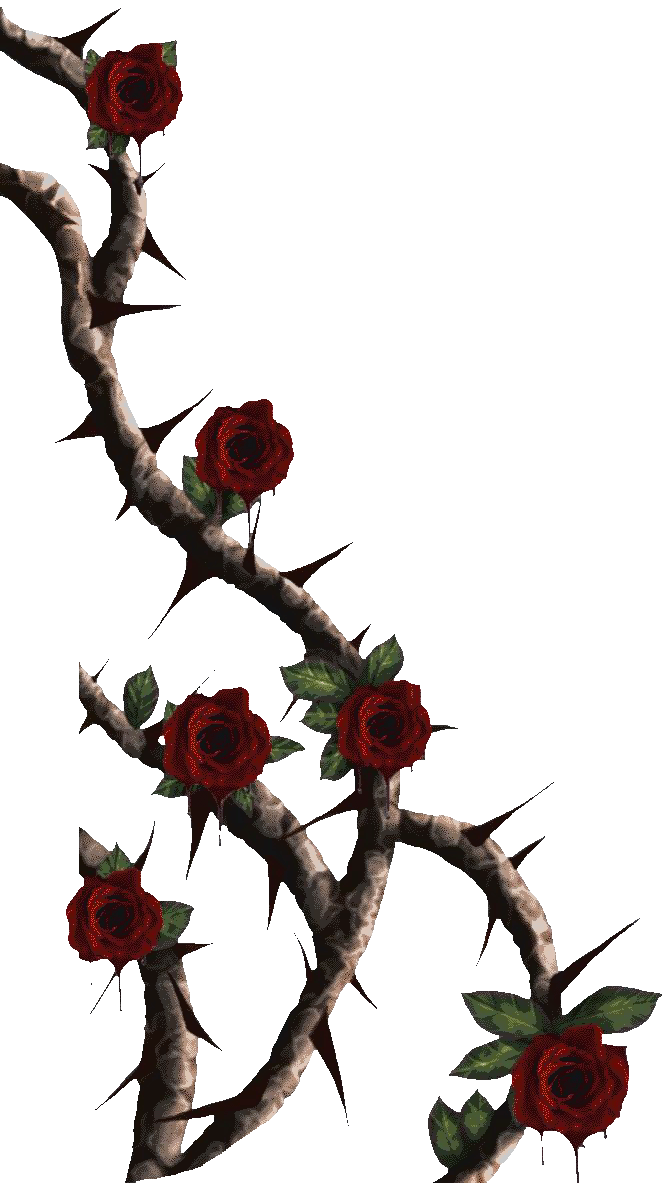

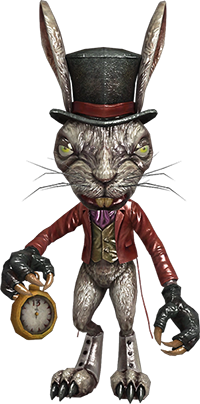

My Thoughts/Reviews

American McGee's Alice
I really wanted to like this more than I did, but the gameplay is so frustrating at times that it hindered my entire experience with the game. That's not to say that I didn't really like literally everything else about it, from the concept, story, aesthetics, music, and overall atmosphere. Gameplay aside, the style of this game is so memorable and unlike most things out there. It takes the concept of Alice in Wonderland and turns it into something very dark and gothic, even demonic at times, and visually represents the ugliness and terror of feelings like grief, guilt, and anger really well.
Story
I found the premise of this take on Alice in Wonderland very interesting and for what it is, I think the game represents its world very well for a 2000 shooter game. Other than some horror elements, and a few stylistic choices, I'd say that this may perhaps be the most accurate depiction of Alice in Wonderland ever. It's not overly fantastical or feel-good like the Disney version, and unlike the Tim Burton trainwreck, the darker, edgy style is actually cohesive here. The way the various levels represent aspects of Alice's mental state was an interesting way to visually tell the story, and despite technical limitations, there was a surprising amount of environmental storytelling. The characters are somewhat lacking, as there just aren't that many of them, but I feel Alice and the Cheshire Cat were well-represented and they definitely get a large chunk of screentime. Alice provides commentary and reactions to the unfolding events around her, and her personality is very true to the original books: direct, matter of fact, and humorous. She fits this mould while also feeling more cynical and grown up. Her interaction with some characters, like the Jabberwock and the Queen of Hearts, pry open her feelings of anger and guilt very well and I found this part of the story very easy to follow. Overall, there is not nearly as much theming or subtext in American McGee's Alice as compared to the sequel, and it can be pretty straightforward, but this isn't necessarily a bad thing and I find it makes you appreciate the improvements made in Madness Returns a lot more.
Gameplay/Combat
As I said before, the game felt unforgivably janky at many points. When the game is built in the Quake engine and yet not optimized or refined for an action platformer, there's just not much to say except the game lacks total cohesion. Even something as simple as moving around can be catastrophic and kill you (if you play this, save every 2 minutes) because the sensitivity of movement in this engine is insanely jerky and unlike 99% of games. I can understand why the engine was chosen perfectly fine, but I don't think there was enough of an effort made in making it feel less like Quake. This engine was founded on the concept of constantly running backwards in a circle and shooting at enemies rushing toward you... Does that work in a corridor-based FPS like DOOM? Yes, but I absolutely do not think it worked in a game like this. Perhaps if the PS2 port had been developed and completed alongside this version of the game as per the developers' plan, it would have controlled more appropriately.
Aesthetics
The look of this game is one of its most positive qualities. Despite the limiting nature of the game engine, the developers still achieved a unique artstyle; you probably wouldn't be able to guess that it was built on the Quake engine just from looks alone, as most of those games tend to look the same. As touched on previously, the style and level design are utilised very well in terms of visual storytelling and the platforming aspect really lent itself to opening up the world visually. There is a lot of verticality in its design even for a game of its age, which also surprised me. Platforming games of this time with so much vertacility were few and far between; and shooters even moreso. I would compare it to Half-Life (1998) in this regard, as it is also a shooter with plaforming segments and lots of verticality. The developers also did a good job of making a diverse set of locations and enemies, and mostly fit well into the Alice world. I'd also compare it to Devil May Cry (2001) and Deus Ex (2000). Some Deus Ex developers (Ion Storm) actually did contract work for this game and you can sort of tell. The dialogue sections specifically remind me of Deus Ex, as both games have the specific letterboxing usage and similar camera work. The weapons are very cute and diverse, and I was very surprised to find a game that didn't the typical shooter weapons, but rather toys fashioned as weapons.
Music
Where other games of this kind typically go for grunge or generic rock soundtracks, Alice instead opted to hire former Nine Inch Nails drummer Chris Vrenna to compose the soundtrack.
Most of the sounds used in the tracks were created using antique toy instruments, music boxes, clocks, and doors. Female voices were sampled and manipulated into nightmarish soundscapes, including instances of them laughing maniacally, screaming, crying, and singing in an eerie, childlike way in order to create an eerie-sounding choir.
—Alice Wiki
It can be hard to define what specific genre the OST is, although a lot of the time it can be described as something of a distorted classical mixed with unconventional instruments. It's a little baroque but mostly its own unique thing which fits the world of American McGee's Alice very well.
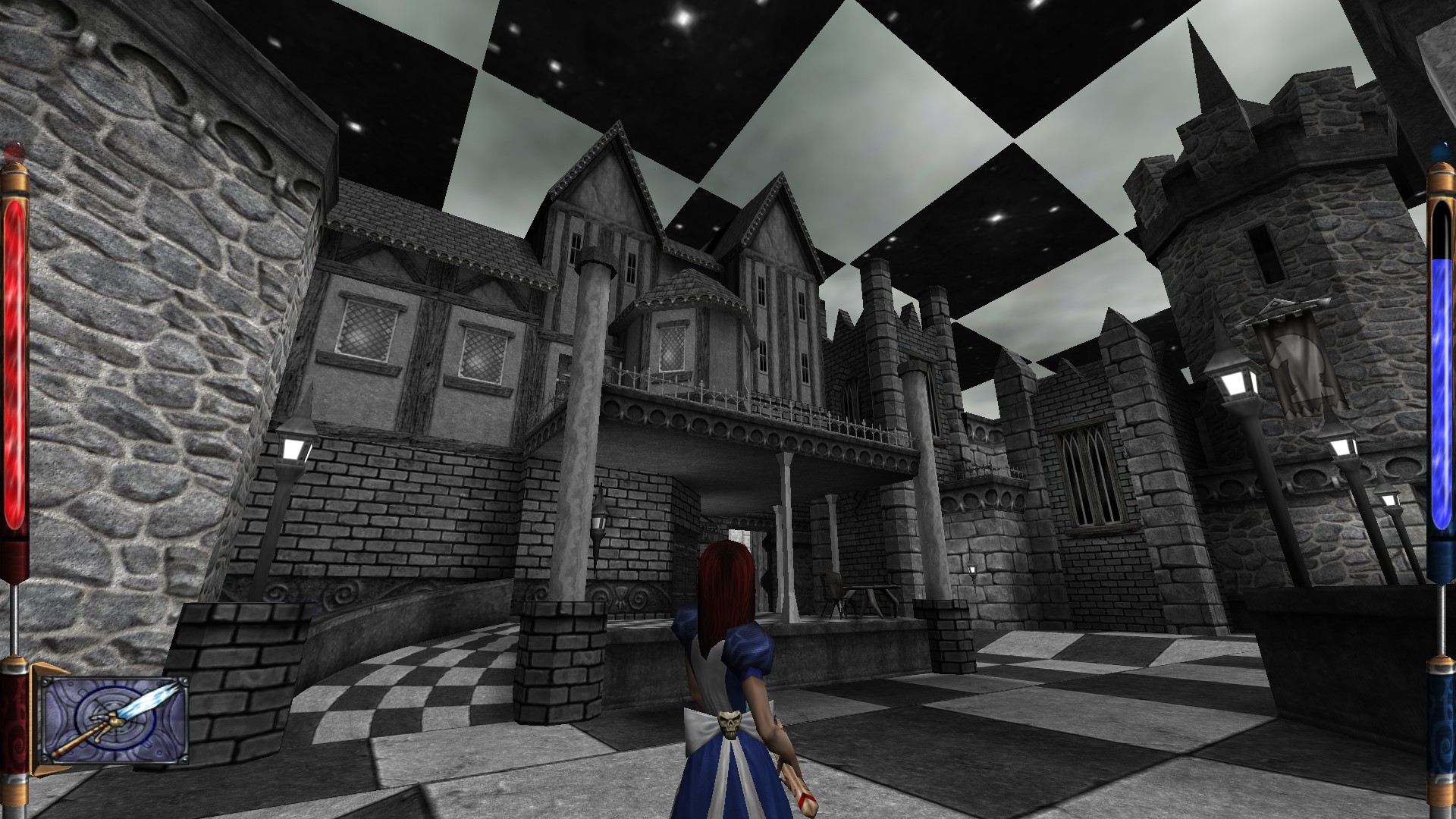
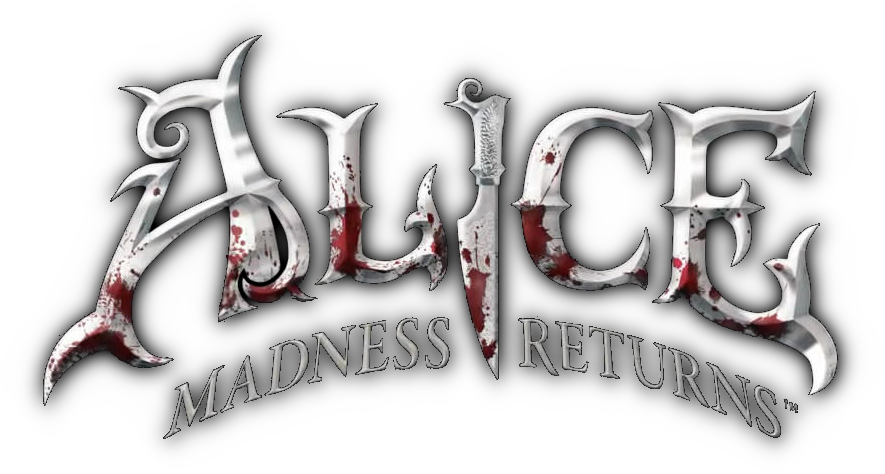
Alice: Madness Returns
I was not expecting this to be one of my favourite games of all time. I don't even know how to start this review. The first game was littered with issues, though I still enjoyed it, and I went into Madness Returns with an open mind. This game was a completely different story. It is better than the first game in every conceivable way, while expanding on everything that made the first game good. Madness Returns has a very strong, unique identity which I don't believe you can find in any other game. As my husband put it, “It's one of those games that, while you're playing it, you know you'll never play a game like this again.”
Every world in this game is so carefully and sincerely crafted. The attention to detail is so unreal, from the set dressing to the weapons, outfits, characters— not a single aspect is lacking. There was never a dull moment, narratively, visually, or gameplay-wise. It is honestly refreshing to see a game of this caliber feature such a strong female lead who is not poorly represented or objectified in any way. Apparently, the creator of this game, American McGee, fired an employee during the development of Madness Returns after the employee asked if he should include an upskirt shot or fill it in with shadow. I think this alone displays how much care American McGee has for his creation and its aspirations to broaden the horizons of those who may play it. I don't want to go into spoilers, because one of the reasons I enjoyed this game so much was how much the nature of the narrative surprised me, but I will say that the subject matter is much heavier and more nuanced than the first Alice game, and it has also been treated with such kindness and grace by the developers that it really placed me in awe several times. It's shocking that something like this even managed to get published by EA. In one of the later levels, you hear and see rusty scissors snapping away in the distance, and the sound they make is supposed to be reflective of something else. This was done so intelligently that it put a shiver down my spine when I first heard it.
Story
As stated before, this story is incomparably better than the first Alice game. That's not to say that the first game was lacking, but this was on a much higher level and brought so much more depth to its central character and the world comprised of her mind. It also brought a sense of reality, as much of the game's story deals with the happenings of the real world around her. Set in 19th-century London, you really get a sense of how the world around her affects her mind and how her mind interprets it. The real world adds a completely new perspective and often even complements that which you see in Wonderland; it also uses prior characters and plot threads to weave a more complete picture of the story. Overall, I was really satisfied with how they chose to format the story and its conclusion, and I think it's one of those rare games where the story can be appreciated by anyone, but it really hits home and impacts its female players the most. Anybody who has a thing for symbolic imagery and thematic detail would have an absolute field day with this game.
Gameplay/Combat
I was just about ready to turn off American McGee's Alice at several points due to the funky and buggy nature of its engine and how it was used. It made doing just about anything feel like a chore, and it left me wondering how Madness Returns was going to improve on it. Safe to say, the gameplay mechanics of Alice (2000) and Madness Returns are in two different universes of quality. Where the first game makes switching weapons and fighting multiple enemies at a time a hassle, Madness Returns refines this to such an unbelievable degree that it's hard to even compare the two games mechanically. The combat here is just smooth—simple, but not easy or dull—just exactly what it needs to be for an action platformer. I think the developers struck an excellent balance between the action portion of the game and the platforming portion of it. Neither feels lacking in comparison to the other, and they don't interrupt each other; all facets of the gameplay are allowed to shine exactly when they mean to. Madness Returns also makes an effort to keep the gameplay fresh level to level, always introducing something new and wonderful. There is a wide assortment of minigames that don't get repetitive, and the combat definitely feels like it had some inspiration taken from hyper–action-oriented games like Devil May Cry, without trying to imitate them. The inspiration taken truly feels like inspiration, not a cheap imitation. Funnily enough, the DMC reboot game ripped off Alice's enemy introduction sequences, and these were seen again in DMC5 but in a much nicer way.
Aesthetics
Continuing off from the DMC inspiration, the game also featured fixed camera angles at many points throughout, which was highly reminiscent of Devil May Cry 4, where it was 80% free camera and 20% fixed camera—saving the fixed angles for impressive and cinematic visuals, as well as certain claustrophobic areas. As someone who loves the fixed camera angles in games like DMC, this was so surprising and appreciated, as I really wasn't expecting to see them. Some of the later levels even capture the demonic, fleshy essence of DMC, which is also a great callback to how the later levels of the first Alice game looked like.
Madness Returns is one of the most beautiful games I've played. There really isn't much to dwell on here; it's an example of how love from the developers can foster a timeless art style. It was created in Unreal Engine 3, and yet is one of the most unique-looking games to have been made in this engine. This was before Unreal Engine turned into the cookie-cutter compilation of preset effects and lighting that we know of today, and you can really see as much in this game. Every detail is handcrafted with such care and artistic consideration. Coming straight from the first Alice game directly into Madness Returns' first area, the Vale of Tears, felt like I was watching Alice truly enter Wonderland. It was just plainly a joy to see every area of this game in stunning detail. While there are many good-looking games out there, there are very few that constantly evoke theme and emotion through visual medium as compellingly as Alice: Madness Returns does. Despite the aged tech behind it, Madness Returns has a very timeless art style that is reminiscent of the original and keeps the essence of the original while drastically improving it. In the real world, the general style is almost caricaturist, and this fit so wonderfully with the style of the game. In Wonderland, many things look familiar but much more fantastical.
Music
It was rather unsurprising to me that this game has a good original soundtrack, as I felt Alice (2000) did not lack in this department at all. Although the first game did suffer from repetitiveness at times concerning the music, Madness Returns definitely brought a unique sound to every level. The theme for this game is just going to be stuck in my head forever, I fear, and it also has many different interpretations of it sprinkled throughout the game to match a certain mood or level, which was a nice touch. Generally, the music goes for a more consistent type of sound than the first one did, which helped make Madness Returns feel more complete.
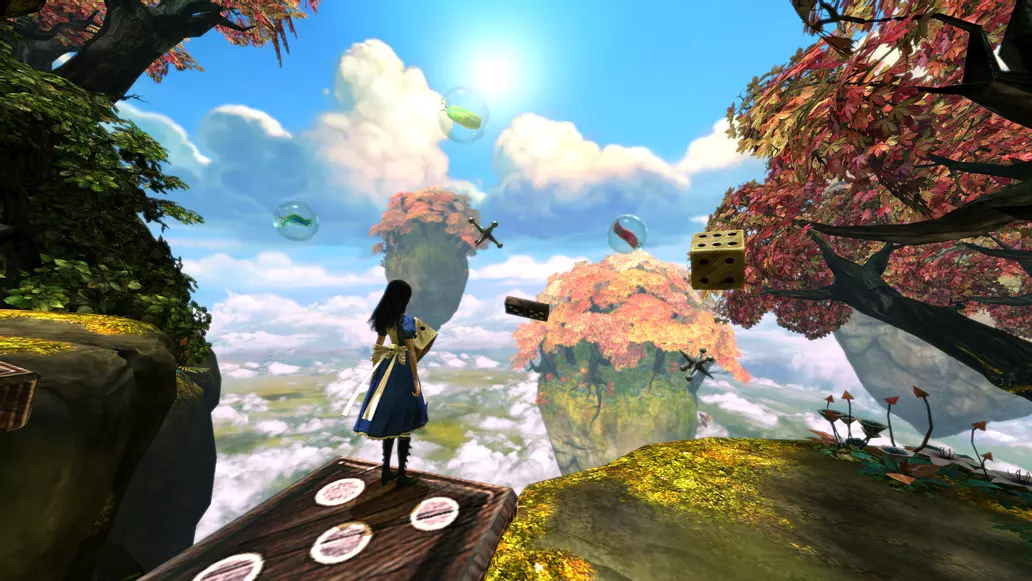

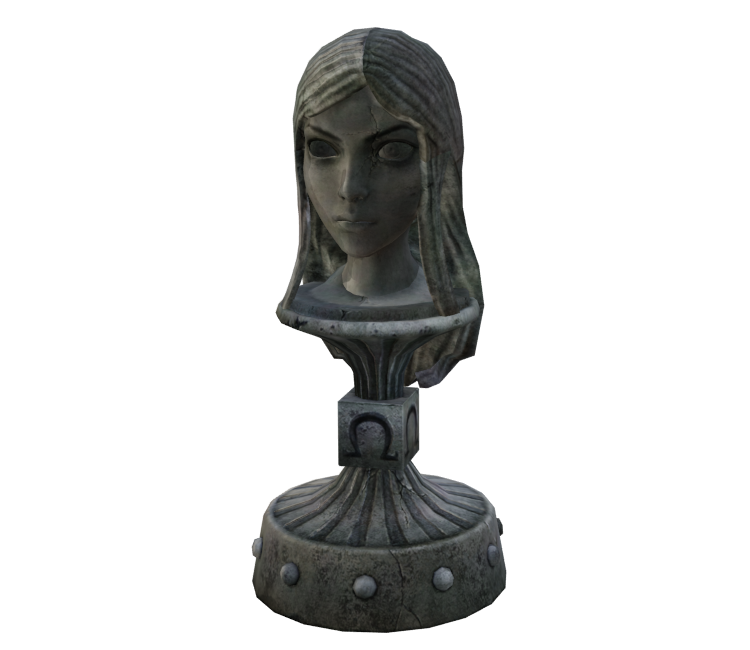
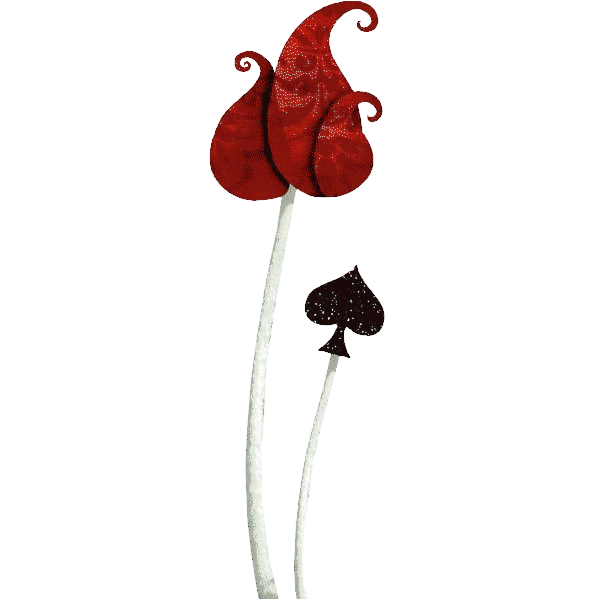

♣
♣
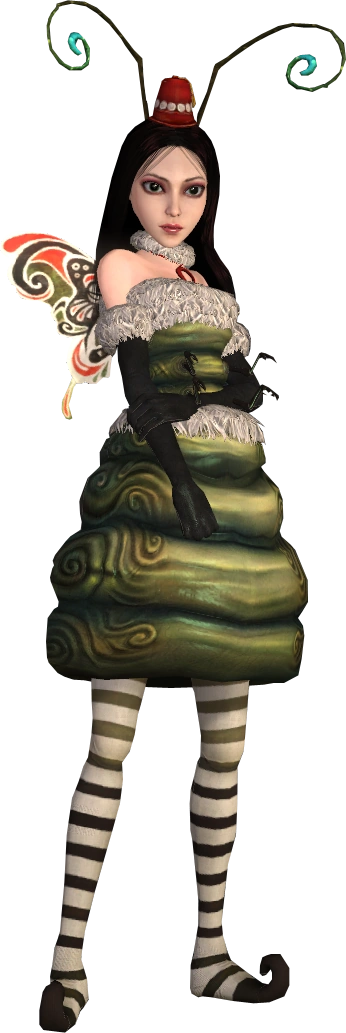
Caterpillar
♥
♥

Checkmate
♠
♠
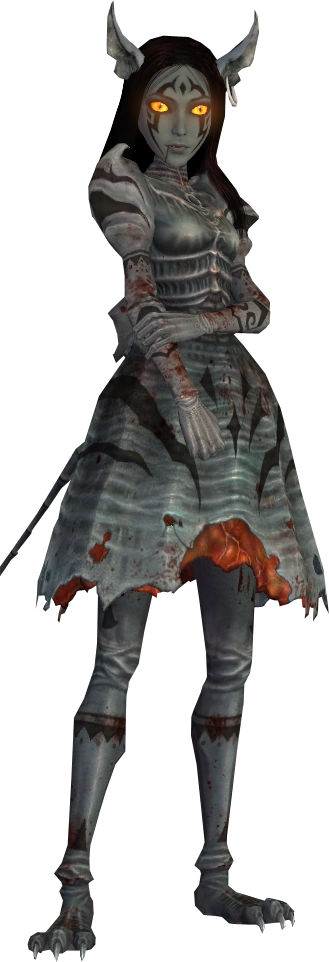
Cheshire
♥
♥
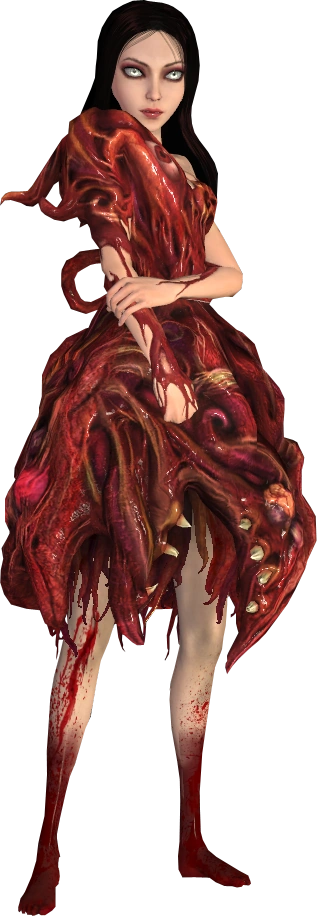
Fleshmaiden
♣
♣

Hattress
♥
♥

Late but Lucky

Classic
♣
♣

Real World
♦
♦

Steamdress
♥
♥
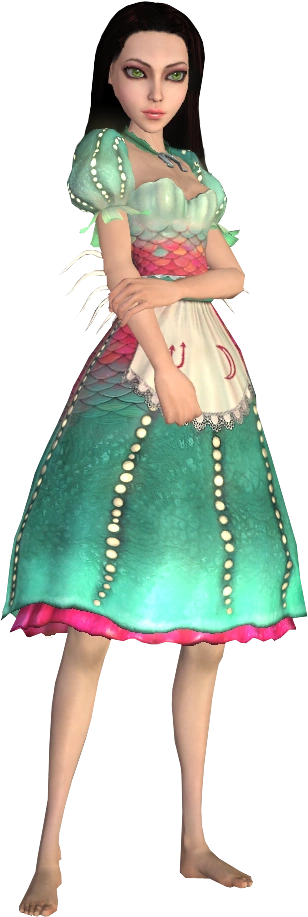
Siren
♣
♣

Silk Maiden
♥
♥
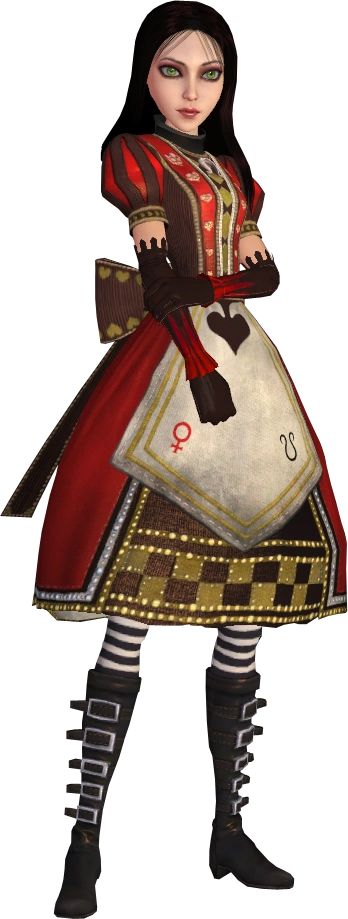
Royal Suit
♠
♠
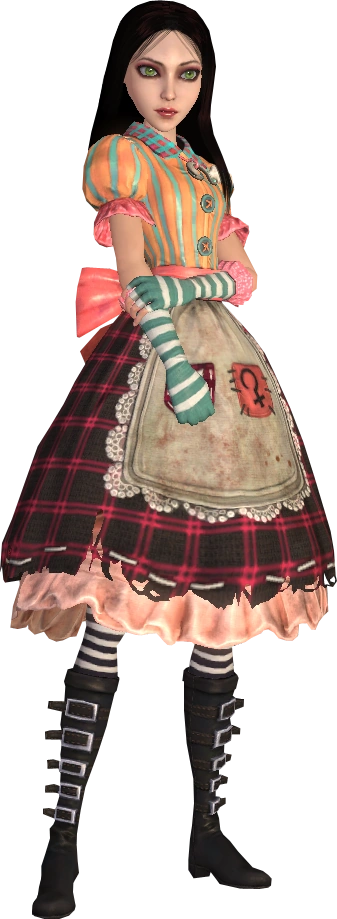
Misstitched
♦
♦
